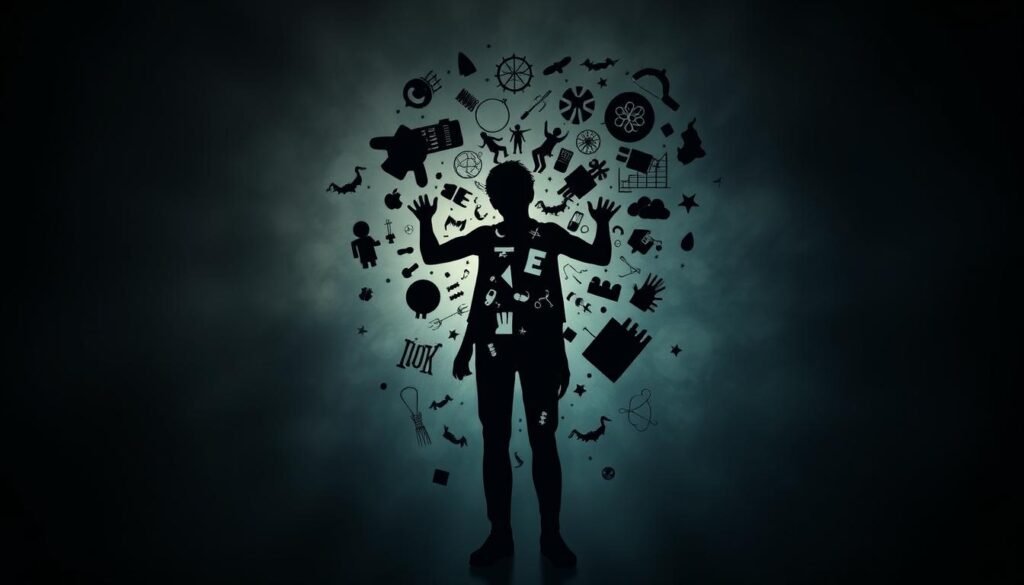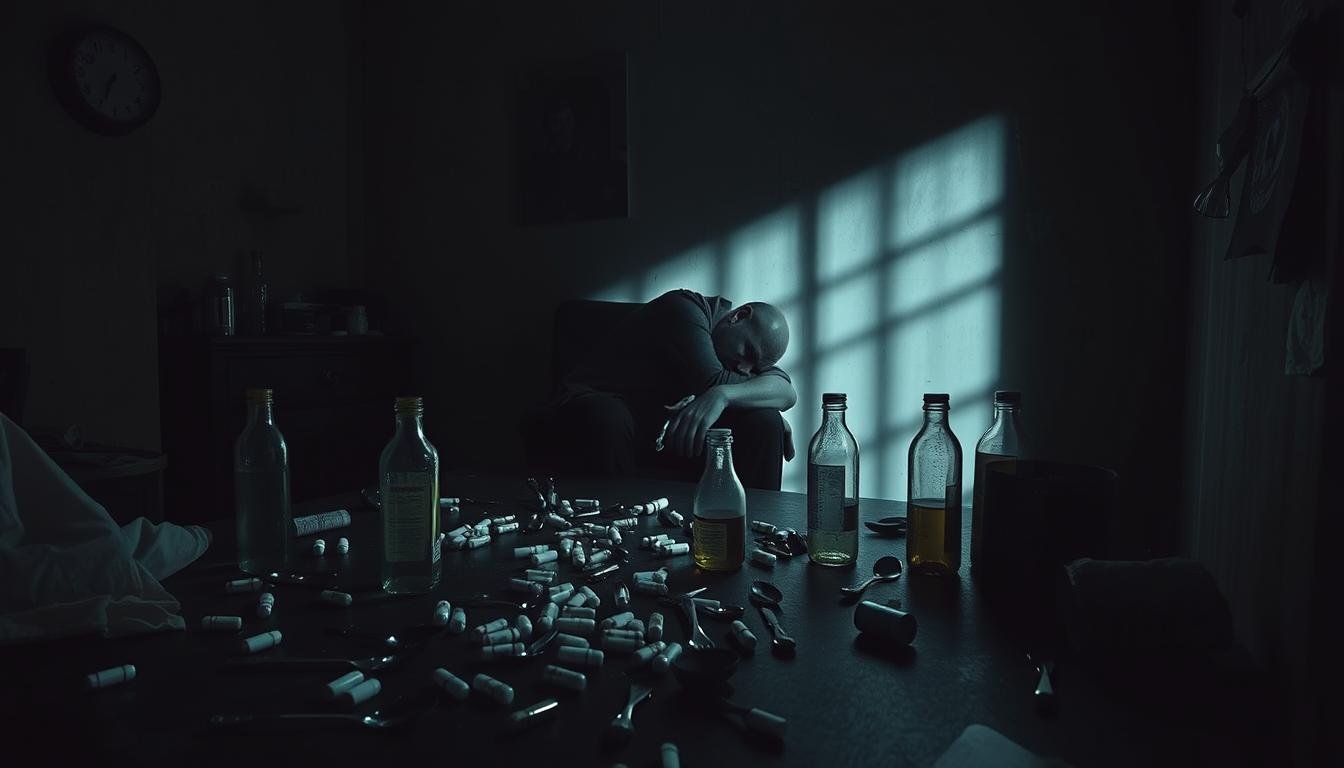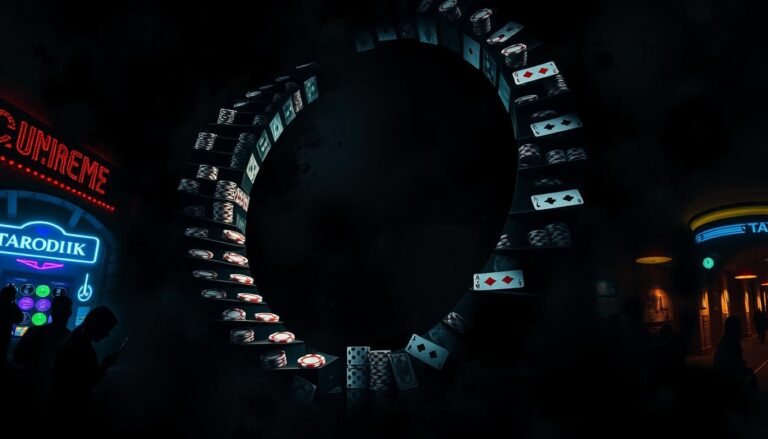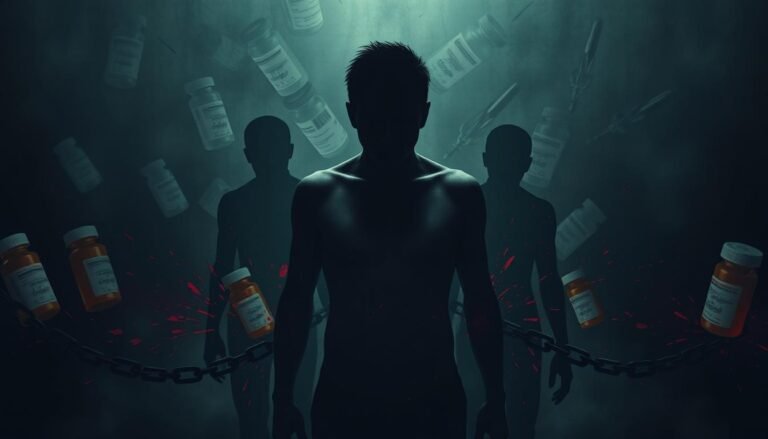Recognize the Most Common Addiction Symptoms
Reflecting on addiction’s impact, I see how vital it is to know its symptoms. The Mayo Clinic says addiction is a chronic disease. It’s about doing something harmful over and over, even when it hurts your life a lot. It’s key to learn about addiction by visiting sites like addictionhotlinetoday.com, habitrecovery.com, and rehabme.org. Knowing the signs of addiction is the first step to getting better. We need a guide to understand addiction well.
About 17 million adults in the U.S. deal with alcohol use disorder. It’s clear addiction touches many lives. I want to stress how important it is to know the signs of addiction. I hope this article helps. By learning about addiction’s common signs, we can support those who are struggling and help them find help.
Key Takeaways
- Recognizing addiction symptoms is key to recovery
- Understanding addiction helps support those who struggle
- Addiction affects many lives, with about 17 million adults in the U.S. struggling with alcohol use disorder
- Resources like addictionhotlinetoday.com, habitrecovery.com, and rehabme.org offer valuable info on addiction
- A wp guide to understanding addiction helps individuals and families through recovery
- Common addiction symptoms include secretive behavior, poor work or school performance, and mood swings
Understanding the Nature of Addiction in Today’s World
Addiction is a complex issue that affects many people and society. The addiction science behind it is both fascinating and alarming. The Mayo Clinic says addiction is a disease that changes the brain’s reward system, causing compulsive behavior.
This change is due to how brain chemistry affects our actions. Addictive substances can release much more dopamine than natural rewards, up to 10 times more.
Statistics show nearly 23 million Americans struggle with addiction. The main drugs causing addiction are marijuana, opioid pain relievers, and cocaine. These substances can lead to tolerance, withdrawal, and even death.
The World Health Organization reported nearly 200,000 drug-induced deaths in 2000 globally. This highlights the need for effective treatment and support.
To understand addiction better, let’s look at some key points:
- Addictive drugs can release two to 10 times the amount of dopamine that natural rewards do, doing it more quickly and reliably.
- Brain receptors become overwhelmed, leading to adaptations such as producing less dopamine or eliminating dopamine receptors, resulting in tolerance to the substance.
- The economic cost of problematic alcohol and drug use in the United States was estimated at $245.7 billion in 1992, with $97.7 billion attributed to drug abuse.
It’s important to see addiction as a complex issue needing a full treatment approach. By understanding brain chemistry and dependency, we can find effective solutions. Moving forward, we must focus on addiction science in treatment and support.
| Substance | Number of Addicted Individuals | Economic Cost |
|---|---|---|
| Alcohol | 17 million | $148 billion |
| Opioid pain relievers | 2 million | $20 billion |
| Cocaine | 1.5 million | $15 billion |
Physical Signs That Shouldn’t Be Ignored
Exploring addiction, I see that physical signs are key to spotting addiction symptoms. The Mayo Clinic notes that changes in appetite, sleep, and energy are signs. It’s vital to notice these physical signs to tackle health risks linked to addiction.
Common physical signs of addiction include unexplained weight loss and changes in bowel habits. Extreme fatigue is another sign. These can point to serious health risks like liver damage, heart issues, and infections.
Knowing these physical signs and getting medical help if they don’t go away is key. Spotting addiction symptoms and tackling health risks is the first step to recovery. The Mayo Clinic advises being alert to these physical signs to get help and avoid health risks from addiction.
Some important physical signs to watch for are:
- Unexplained weight loss
- Changes in appetite or sleep patterns
- Extreme fatigue or tiredness
- Shortness of breath
- Severe headaches
By knowing these physical signs and getting medical help when needed, people can tackle addiction symptoms and reduce health risks from addiction.
Behavioral Changes Through the WP Perspective
Exploring addiction, I see big behavioral changes in daily life. These changes might seem small but show a big problem. The Priory website says social withdrawal is a sign of addiction. People start to stay away from friends and family.
Some signs of these changes are:
- Changes in daily routines, like not sleeping well or eating poorly
- Financial impact, like debt, bankruptcy, or losing a job
- Doing worse at work or school
It’s key to spot these behavioral changes early. Knowing why someone is addicted helps us find ways to help them. Making plans to change behavior takes steps like Discover, Define, Design, and Deploy.
Seeing the social withdrawal and financial impact of addiction is a start to recovery. We should understand addiction, not judge it. This way, we help create a place where people can change and recover.
Psychological Warning Signs of Addiction
Exploring addiction reveals the need to spot psychological warning signs. The Mayo Clinic notes mood swings, anxiety, and depression as key indicators. These signs might seem small but hint at a bigger issue.
Common signs include:
- Mood swings: sudden changes in mood, irritability, or emotional instability
- Anxiety: feelings of nervousness, fear, or apprehension
- Depression: persistent feelings of sadness, hopelessness, or loss of interest in activities
It’s vital to tackle these signs to protect mental health and well-being. Recognizing them and getting help is the first step towards recovery.

Addiction is treatable, and seeking help is the first step to a better life. Being aware of these signs and acting on them helps us and our loved ones recover.
| Psychological Warning Sign | Description |
|---|---|
| Mood Swings | Sudden changes in mood, irritability, or emotional instability |
| Anxiety | Feelings of nervousness, fear, or apprehension |
| Depression | Persistent feelings of sadness, hopelessness, or loss of interest in activities |
The Impact on Relationships and Social Life
Addiction affects personal connections deeply. It changes family, work, and social life dynamics. This is true for everyone involved.
Research shows social ties are key for our health at any age. But addiction can make people pull away from friends and family. This is because 51% of partnered adults in the U.S. say their partner is often or sometimes distracted by their cellphone while trying to have a conversation. This distraction can make people feel alone and disconnected.
Addiction also reshapes family relationships. It can introduce communal sharing, equality matching, authority ranking, and market pricing into family dynamics. These changes can be hard for family members to handle, making it tough to keep things normal. Some important statistics show how addiction affects relationships and social life:
- 40% of partnered adults are bothered by the amount of time their partner spends on their mobile device
- 34% of partnered adults admit to having looked through their partner’s cellphone without their knowledge
- 23% of people have felt jealous or unsure of their relationship due to their partner’s interactions on social media
Family Dynamics
Addiction can cause tension and conflict in families. It’s important to tackle these issues and work on rebuilding relationships.
Workplace Challenges
At work, addiction can lead to less productivity, more absences, and strained relationships with coworkers.
Social Circle Changes
People with addiction may also change their social circles. They might pull away from friends and acquaintances due to feelings of shame or guilt.
Understanding Withdrawal Symptoms
Understanding withdrawal symptoms is key in addiction treatment. The American Psychological Association says detox is getting rid of harmful substances like alcohol and drugs. Symptoms can be different for each substance but often include headaches, fast heart rate, and nausea.
The severity of withdrawal symptoms depends on how long and how much someone used the substance. It also depends on the person’s physical and emotional health. Getting professional help for addiction treatment is vital to manage withdrawal symptoms safely and effectively.
Some common withdrawal symptoms include:
- Muscle and joint aches
- Nausea and vomiting
- Diarrhea
- Insomnia
- Anxiety and depression
Skilled clinicians are key in managing withdrawal symptoms. They provide medical and psychological support during detox. With the right addiction treatment and support, people can beat withdrawal symptoms and recover well.

Remember, recovery is a journey. It’s important to have a supportive environment and professional help. This helps manage withdrawal symptoms and achieve a successful recovery.
| Substance | Withdrawal Symptoms |
|---|---|
| Alcohol | Headaches, rapid heartbeat, nausea, vomiting |
| Opioids | Muscle and joint aches, nausea, diarrhea, insomnia |
| Benzodiazepines | Anxiety, panic attacks, restlessness, insomnia |
Treatment Options and Support Systems
Struggling with addiction? There are many treatment options and support systems out there. Getting professional help is key to recovery. It gives you the tools and guidance you need to beat addiction.
Treatment plans are tailored to meet your unique needs. They follow the American Society of Addiction Medicine (ASAM) criteria. Goals are specific, measurable, and achievable.
Benefits of Support Groups
Support groups offer a sense of community and connection. They are vital for those recovering from addiction. These groups provide a safe space to share experiences and learn from others.
- Reduced feelings of isolation and loneliness
- Increased sense of accountability and motivation
- Access to valuable resources and information
- Opportunities for personal growth and development
Family involvement is also key in recovery. Family members offer emotional support and motivation. Working with treatment professionals and support groups creates a strong support system.
With the right treatment and support, individuals can beat addiction and achieve long-term recovery. Recovery is a journey, and asking for help is okay. By seeking professional help, joining support groups, and involving family, individuals can succeed and build a brighter future.
| Treatment Option | Description |
|---|---|
| Counseling | One-on-one therapy sessions with a licensed counselor |
| Therapy | Group or individual therapy sessions to address underlying issues |
| Medication | Prescription medication to manage withdrawal symptoms or cravings |
Resources for Recovery and Healing
Recovery is a journey, and having the right resources is key. These resources help us overcome addiction and stay sober. Online support is a big help, available anytime and anywhere.
Online Support Communities
Online support groups are safe and private. They let people share their stories and get help. These groups are important for feeling connected and supported.
Professional Treatment Centers
Treatment centers offer a detailed plan for recovery. They provide counseling, therapy, and help with medication. These places are essential for getting the tools to beat addiction.
Crisis hotlines and emergency contacts also offer quick help. They are lifesavers for those in addiction crises. They provide a safe place to get support.
Conclusion: Taking the First Step Toward Recovery
Addiction is a complex issue that needs a full treatment plan. The first step is to admit you or a loved one has a problem. Admitting this is key to starting the healing journey.
The recovery path may look tough, but you’re not alone. Many have beaten addiction and found freedom. With the right support systems and treatment options, you can too. Every step you take brings you closer to a better life.
Recovery isn’t always easy; you’ll face ups and downs. But with determination, self-compassion, and support, you can get through it. Start today, and you’ll be on your way to a happier, healthier life.






